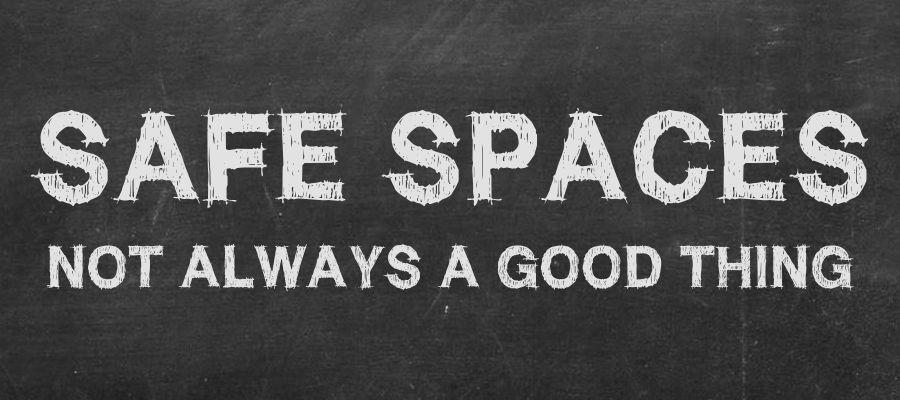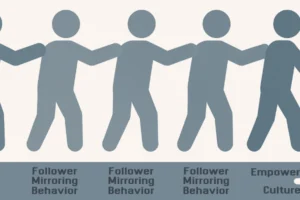Empowerment vs. Safe Spaces
If you had to choose one, which would you rather be: Empowered or Safe? In recent years, the call for “safe spaces” has grown louder in workplaces, schools, and social environments alike. Sure, on the surface, a safe space sounds nice—a place where individuals can feel shielded from harm or distress, both physical and emotional. However, this well-meaning idea typically yields unintended but highly detrimental consequences, leading to stagnation, conformity, and a harmful reliance on comfort over growth. We don’t want that.
Think of it like this: you can shield yourself in a corner and hide from the world, or you could be confident enough to face the world. Leaders who advocate for empowerment understand that progress requires discomfort, resilience, and adaptability, which safe spaces cannot offer. Safe spaces provide stagnation, rigidity, groupthink, and many other horrible things that neither a person nor an organization needs.
The Safety Paradox holds that pursuing safety can paradoxically introduce vulnerability and decline. Throughout history, we observe this paradox in various realms, from bureaucratic red tape to technological stagnation, where the over-emphasis on safety becomes a barrier to necessary growth. The underlying lesson here is clear: empowerment (not safety) should be our guiding principle for real advancement.
The Adversity Nexus and the Limits of Safe Spaces
When safety becomes the primary focus, individuals and organizations often find themselves stuck in the spiral of the Adversity Nexus. In this context, the avoidance of adversity becomes so central that it actually leads us into adversity. From this perspective, what was meant to protect us becomes a self-imposed limitation that typically results in something far worse. The safety paradox reveals itself in numerous settings where attempts to shield people from discomfort inadvertently lock them into stagnation.
For instance, educational institutions often promote “safe spaces” to shield students from challenging ideas. While the intention is to provide an environment free from hostility, these efforts actually hinder intellectual diversity and discourage critical thinking. By sanitizing discussion topics or discouraging debate, students are deprived of the skills needed to engage with differing viewpoints—essential skills in the broader world. Such environments promote intellectual conformity rather than cognitive resilience, problem-solving, or creativity, ultimately creating a culture where ignorance and safety are valued above critical inquiry and exploration. Of course, this is terrible for any individual, organization, or even nation seeking to truly thrive.
Empowerment as a Pathway to Growth
Understand that empowerment and safety are fundamentally different. Safety prioritizes risk avoidance, while empowerment encourages calculated risks and resilience-building. In other words, to empower is to equip individuals to confront challenges, not evade them—a mindset that fosters personal growth, adaptability, and an innovative spirit. Innovation requires something that safety cannot provide. Empowerment fuels innovation by embracing diverse perspectives. However, we must understand that true innovation comes from the clash of competing ideas rather than their avoidance. Thus, prioritizing safety over empowerment tends to avoid these productive conflicts, resulting in stagnation and inhibiting growth.
For example, an empowered workplace does not impose excessive censorship or content monitoring to avoid emotional discomfort. Instead, it encourages open dialogue and challenging exchanges of ideas. This promotes intellectual diversity and allows employees to navigate disagreements constructively, strengthening both the individual’s and the organization’s capacity for innovation and problem-solving.
The Safety Paradox in Context: A Closer Look at Real-World Implications
I have written about this before, but the implications of the safety paradox extend into nearly every sector of society, from personal development to government structures. Here are a few areas where excessive emphasis on safety has led to unintended negative outcomes:
- Personal Risk Aversion: In workplaces and communities where risk is avoided to prevent discomfort, individuals grow increasingly averse to failure. This risk aversion prevents them from pursuing new ideas or initiatives with potential for significant growth.
- Bureaucratic Red Tape: Safety procedures in organizations often morph into rigid regulations that stymie creativity and adaptability. Decision-making slows down, and innovative projects struggle to move forward, constrained by layers of checks and balances.
- Technological Stagnation: In industries like aviation or nuclear energy, stringent safety regulations can hinder the exploration of new technologies, even when these might lead to safer and more efficient methods in the long run. Here, safety ironically stifles progress toward greater security.
- Educational Limitations: Educational systems focused on maintaining a safe, conformity-driven environment limit students’ exposure to critical thinking and problem-solving challenges. Students become reluctant to deviate from predefined paths, leaving them ill-prepared for an ever-evolving world.
- Workplace Emotional Censorship: Companies attempting to maintain emotionally safe workplaces often implement strict content restrictions, discouraging employees from sharing unconventional ideas. As a result, organizations may lack the diversity of thought needed for true innovation.
- Governmental Overreach: In systems emphasizing economic safety, extensive regulation often discourages entrepreneurship and innovation. With fewer incentives for ambitious pursuits, state dependency increases, limiting individual agency and collective economic growth.
And these examples go on and on. The point is that these examples illustrate the paradox: the walls we build for safety often become the walls that deter growth and innovation. The bigger the walls become, the less room we have to grow. Of course, the impact is felt not only by individuals. Weak minds lead to weak societies rooted in cultural stagnation, economic decline, and decreased resilience. Any history book tells this tale many times.
Balancing Safety and Empowerment: A Leader’s Responsibility
Sure, safety has its place, but it must not become the primary objective if we aim for growth and innovation. To avoid falling into the safety paradox, you must encourage an environment of empowerment by adopting several principles:
- Encourage Calculated Risks: Foster a culture that celebrates calculated risks as learning opportunities. This doesn’t mean recklessness, but it does mean creating room for trial and error.
- Promote Resilience Over Comfort: Help individuals and teams develop resilience, adapt to adversity, and learn from failures. Empowerment builds a sense of inner security, derived not from avoiding risk but from the confidence that one can handle challenges as they arise.
- Emphasize Open Dialogue: Rather than censoring controversial ideas or discouraging debate, encourage a culture of respectful discussion. This strengthens team cohesion and broadens perspectives, enabling greater creativity and problem-solving.
- Challenge the Comfort Zone: Empowerment often means nudging people out of their comfort zones. While this can initially feel uncomfortable, it cultivates self-reliance, critical thinking, and the ability to navigate the unfamiliar—qualities that “safe spaces” cannot provide.
Conclusion: Empowerment as a Catalyst for Progress
Ultimately, true safety lies not in avoidance but in preparation. An empowered individual or organization can handle challenges without retreating into a cocoon of perceived security. Leaders who choose empowerment over safe spaces understand that growth demands a willingness to engage with the unknown and the uncomfortable. While safe spaces may provide short-term comfort, they often leave individuals and organizations vulnerable in the long run, stripped of their ability to be resilient in the face of adversity.
The safety paradox reminds us that excessive emphasis on safety can lead us further from the desired outcomes—growth, innovation, and resilience. Leaders who prioritize empowerment cultivate a culture where individuals are equipped to handle complexity, embrace risk, and ultimately thrive in a world that demands adaptability. As leaders, our role is not to shield but to equip, encouraging those we lead to face challenges boldly and find strength not in safety but in the transformative power of empowerment.




